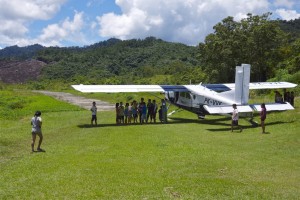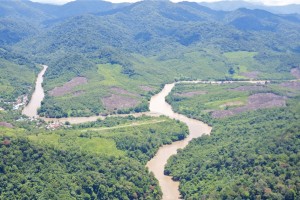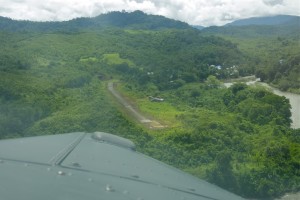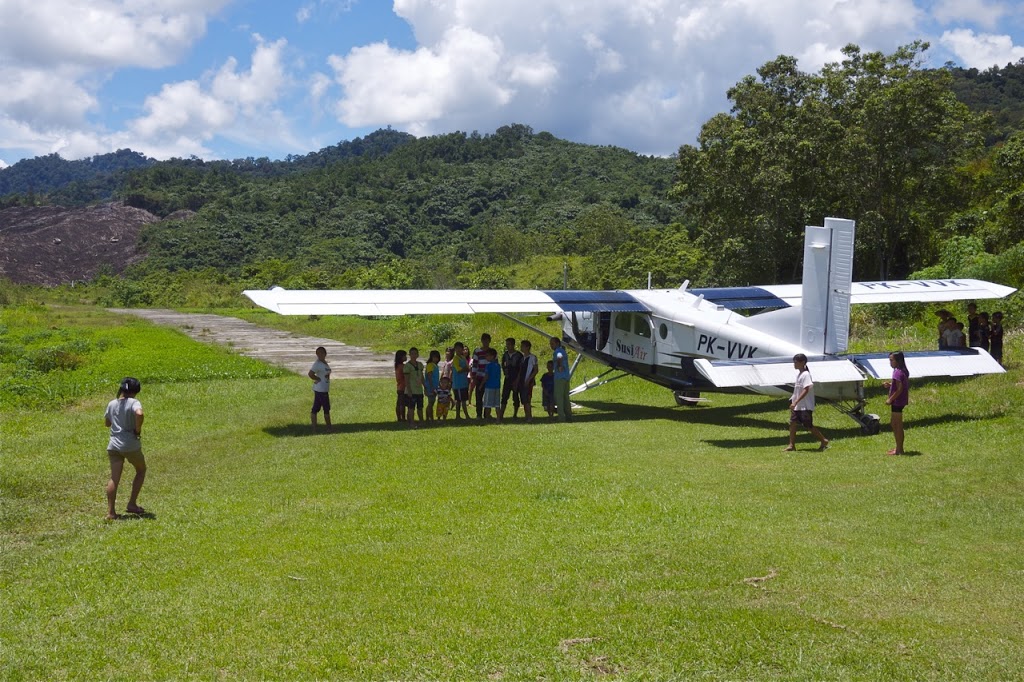Length: 350m
Runway: 03/21
Elevation 800ft
Last week we had a few charters into this airstrip which is known to most pilots who fly around in north Kalimantan as the frequency change over point between the north and south. However, it’s not an airstrip we normally go to, as we don’t have a subsidy contract for it. I’d been here once before during my checkout but that was quite a while ago, so I dropped in on an empty leg on the way back from Long Sule to refresh my memory before the charters.
 |
| Pilatus PC-6 PK-VVK parked up on the apron at Long Pujukan |
When going into an unfamiliar strip, I always like to fly overhead nice and high to get a scope of where exactly it’s positioned within the terrain; luckily in Kalimantan that’s usually possible as the terrain isn’t too high. Unlike back in the UK, I can’t just refer to a Pooley’s or AFE airfield guide, as I don’ think they cover Northern Borneo last time I checked!
 |
| Long Pujukan airstrip, Northern Kalimantan |
Once I’ve had a good look at the airstrip, I’ll then descend into the valley to see how the approach looks. Long Pujukan is a “one way in, one way out strip”, meaning you can only land one direction and take-off in the opposite direction. To make things even more interesting, it’s also got a large ridge on the approach (brown patch on the right of the photo above) along with a very large tree slap bang in the middle of short finals. A straight in approach over the ridge would cause you to end up too high to land at the beginning of the runway so I decided the most suitable way to land was with a curved approach, turning in from the right.
The other thing all one way in, one way out strips have is have a “key point”. This is a position somewhere on the approach where you want to have the aircraft fully configured for the landing at the correct airspeed. After this point your only option is to land. A go-around after this will more than likely end up as a CFIT (controlled flight into terrain) as the aircraft won’t be able to out climb or manoeuvre around the terrain. If you’re not happy in any way before the key point, you can safely go-around and abort the approach for another attempt.
 |
| Go-around at Long Pujukan – too high to safely land (photo from last year) |
One small bonus for Long Pujukan is that it’s a sealed surface runway. That’s a very rare thing out here and helps reduce both the landing and take-off rolls. However, whoever built this runway really needs to get their straight edge adjusted. As you can see from the photos, there’s a rather pronounced bend in it as well as being quite narrow.
 |
| Lined up for departure at Long Pujukan |
Take-offs also need some consideration. The terrain that made for a curved approach, also makes for a curved departure. When empty, the Porter can easily out-climb it however, a charter of 6 large government officials along with baggage will make for a much heavier aircraft, requiring a left turn immediately after rotation to follow the river. Once all the flaps are in and the climb established it was just a case of ensuring adequate terrain clearance before turning on-course for Malinau.
Discover more from Matt Dearden
Subscribe to get the latest posts to your email.

Absolutely fascinating, no wonder you always have a big smile when talking about your work! Keep safe, Dad XX
That runway looks a bit like Redhill’s taxiway “runway” with it’s bend (when the grass is waterlogged). Apart from the terrain complications of course!